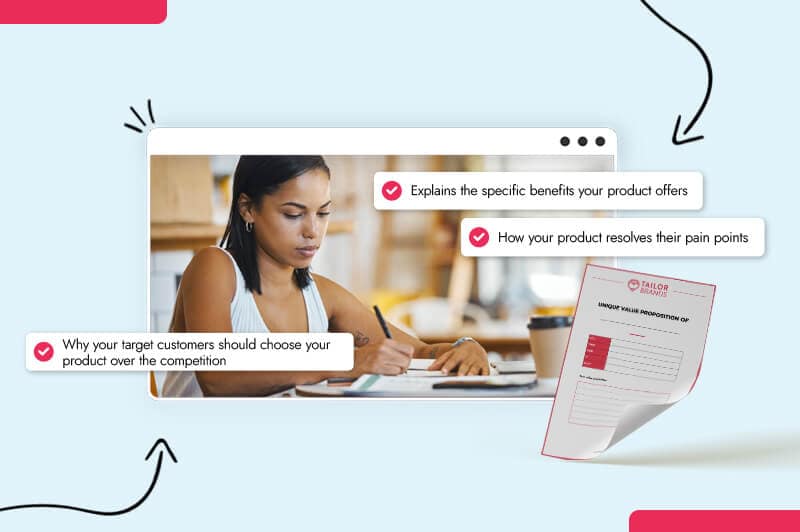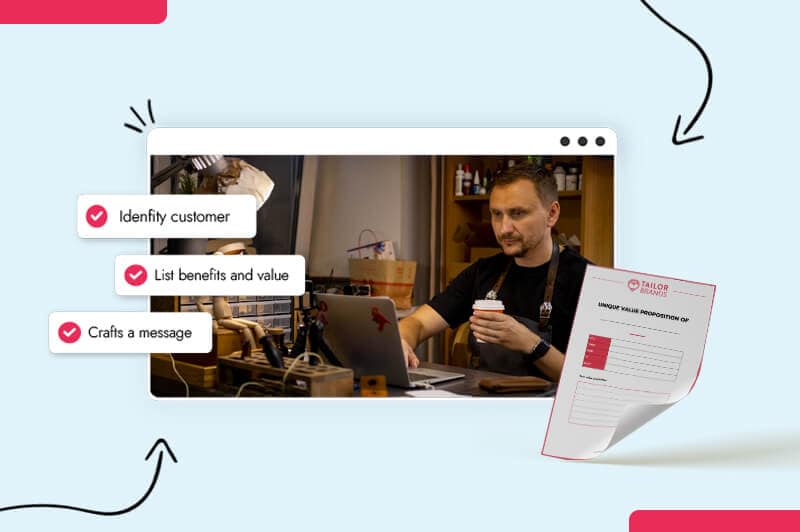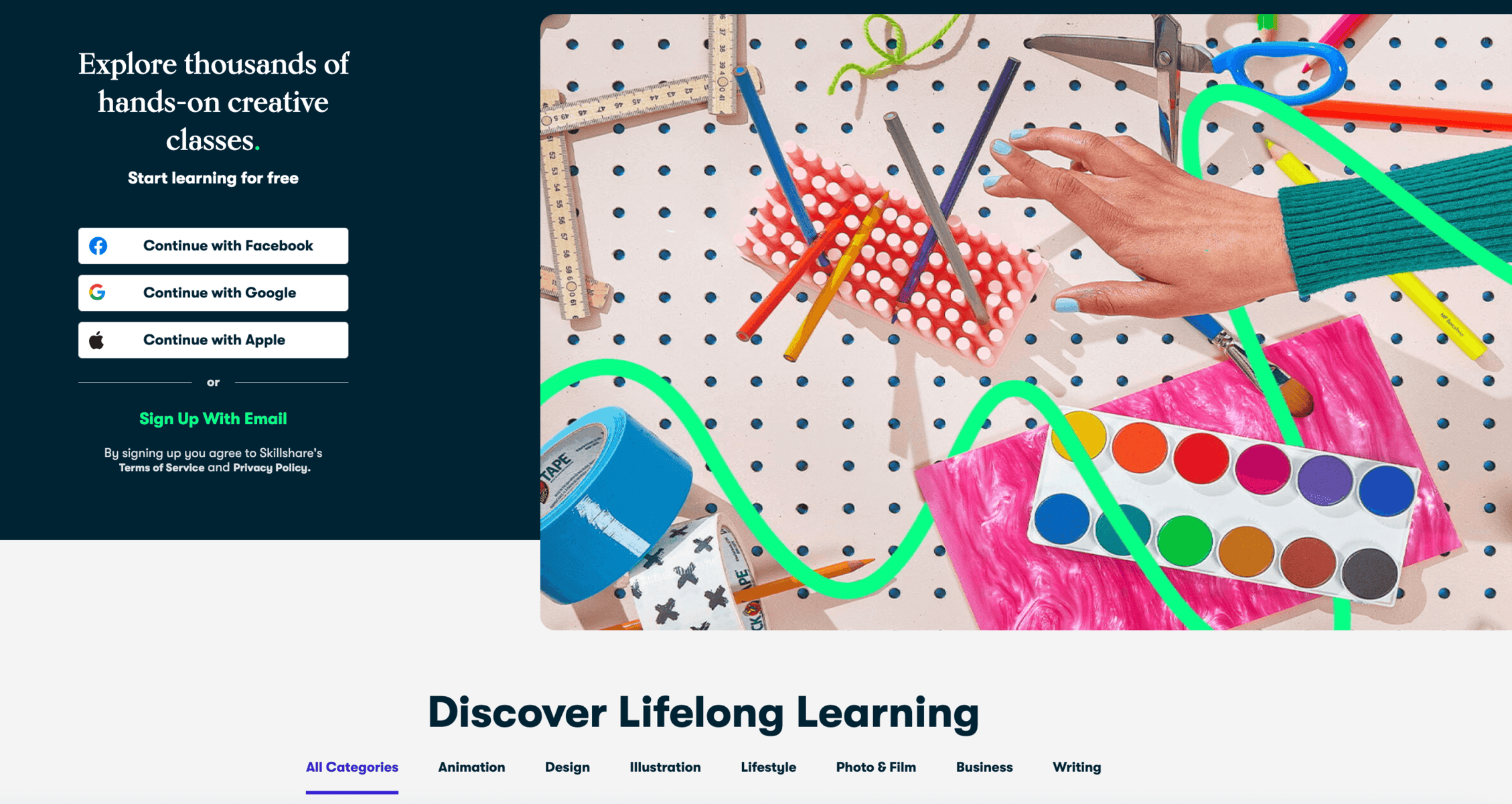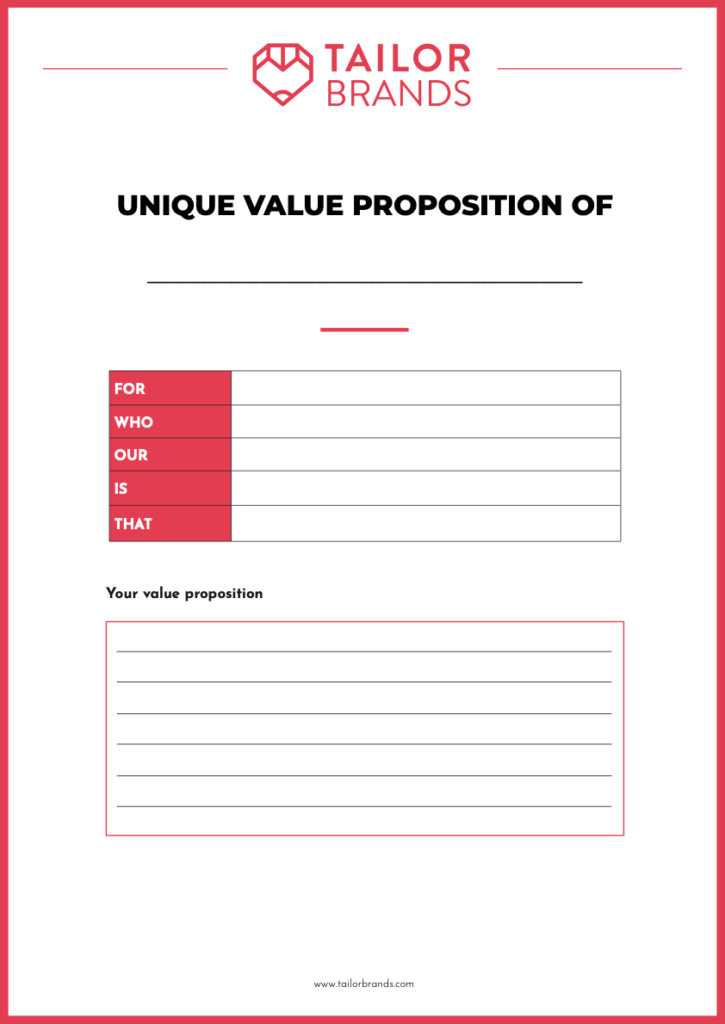
Small businesses or big businesses, all businesses have a clear idea of their business and what sets them apart from their competitors. This is where a unique value proposition (UVP) comes into play.
It’s time you created your business’s UVP, but to do that, you need to know a few things about it. In this post, you’re going to learn what a UVP is, why you need it, and how to find your business’s UVP.
A unique value proposition is a short statement that tells buyers why they should choose your product or services. A UVP tells customers:
Your UVP should be clear and easy to understand as it’ll be right up front on your website. Think of a UVP like a short elevator pitch that you’re telling someone who doesn’t know about your business.

Whether you’re selling candles, organic dog treats, or have a yoga studio, you need to have a clear and effective UVP for your business to succeed. But why do you need a UVP? A good UVP will do the following:
The odds are, there are other businesses that offer the same products or services as you. But that doesn’t mean you have to switch up your business idea; instead, you just need to find a unique selling point to focus on.
Your unique value proposition will tell your customers how your product or service is different from your competitors and why it’s better than your competitors. When you convey that message effectively, your customers will see your product or service as more valuable.
for a specific product or service—they know what their problems are. However, you need to direct customers to your business and show them that your product or service is the best option to solve their problems.
A strong UVP will clearly communicate what your product or service can do so they can end the search and choose your business.
You don’t want everyone looking at your business; you want the customers who are interested in your product or service. A strong UVP will target the right people who are more likely to buy your product or service.

Now that you know what a UVP is and why it’s a staple for your business, it’s time to try to create your own UVP. After reading the steps, check out our template to help create your UVP.
Before you go ahead and start creating your UVP, you need to know who your ideal customer is. If you haven’t created an audience persona (or don’t know what it is), then read this post on how to create an audience persona (when you’re done, come back to this post and continue creating your UVP). If your business is fresh and you don’t know your audience, read this post on how to conduct audience research.
By identifying your ideal customer, you’ll know how to craft your UVP in a way that will connect with them. For example, Skillshare is an online learning platform offering thousands of courses to people who want to learn new skills.

Using the example above, Skillshare knows who its customers are. By knowing who they are, they can create messages that connect with prospective customers. As you can see, “discover lifelong learning” and “explore thousands of hands-on creative classes” all work to connect to its customers.
Now that you know your ideal customer, it’s time to put the pieces together to form your UVP.
To get started, make a list of all the ways your product/service benefits your customers. Then, decide the value that your customers receive from those benefits. And lastly, use your value to identify the various ways your product stands out from the competition.
For example, let’s say you have a dog treat company. Some of your benefits could be that your treats are all-natural and organic. The value would be that customers are keeping their dogs healthy by using your dog treats. Your product may be made in the USA using ingredients from local farmers, which makes your business stand out from the competitors.
Ok, so this is the fun part. This is the step where you put everything together. Now that you have every element of your UVP, all you need to do is put it together in a straightforward way, using the language your customers connect with.
Continuing with our dog treat business as an example, using all the information from the previous step, let’s put it together to create a UVP. Here’s our UVP:
All-natural, all organic, made in the USA.
We work with local farmers to make your furry friend’s healthiest and tastiest treats.
The UVP tells everything the customer needs to know, in a way that connects with them. Use the template below to help craft your UVP.


Download this PDF template and have it available whenever you need it.
Now that you have your UVP written out the first draft of your UVP, use some of your friends and family to read your UVP. Listen to their initial opinions and first impressions, and ask them if they understand the product’s benefits, value, and how it differs from the competition. With their feedback, revise your UVP if needed.
While I know you may want to skip this step, don’t do it! Having a UVP is essential for any business, now you just need to do it.
Using the template above, try to create your own UVP. It’ll help you align with your customer’s needs, stand out from the competition, and give you insight into how you can attract your ideal customer.
This portion of our website is for informational or educational purposes only. Tailor Brands is not a law firm, and the information on this website does not constitute legal advice. All statements, opinions, recommendations, and conclusions are solely the expression of the author and provided on an as-is basis. Accordingly, Tailor Brands is not responsible for the information and/or its accuracy or completeness. It also does not indicate any affiliation between Tailor Brands and any other brands, services or logos on this page.
Products
Resources
©2025 Copyright Tailor Brands